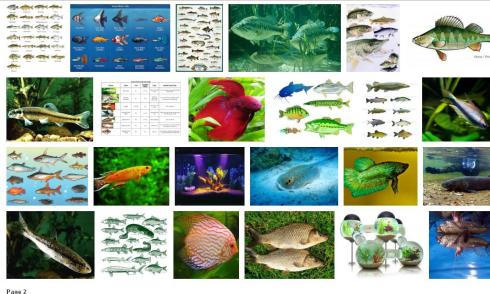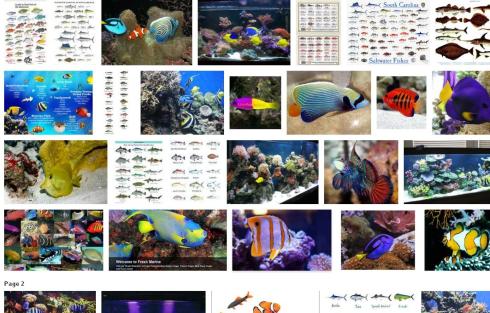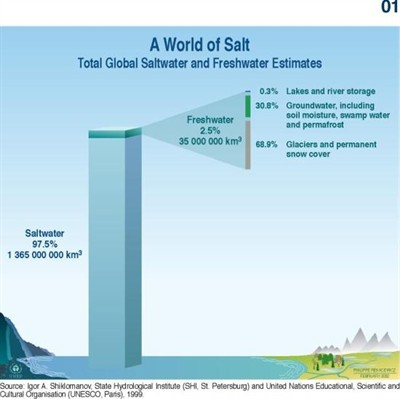Freshwater fishkeepers often say “Someday I will set up a saltwater tank. They are so much prettier.” Are they right?
Let’s have a contest. I will be the judge. Are saltwater fish more colorful than freshwater?
I’ll rate the fish from 1 to 5. Five is the best score, the prettiest a fish can be.
Let’s start with a red fish:
Freshwater fish, the Red Velvet Swordtail.
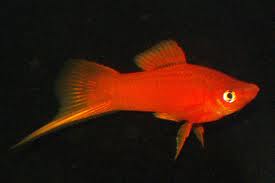
I’ll give the Red Sword 5 points.
The saltwater red fish, the Coris Wrasse:
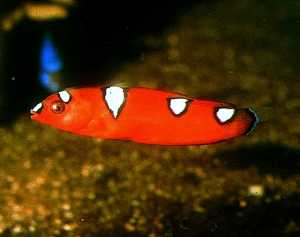
I will give the Coris Wrasse 4 points so the score is Freshwater 5, Saltwater 4.
Wait a minute, the Wrasse grows up and loses his red color!
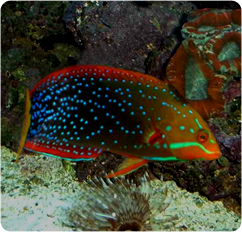
A beautiful fish but not red! I give it 2 points. The score is Freshwater 5, Salt 2.
Let’s look at a White fish:
The freshwater entry is the albino Corydoras Catfish.
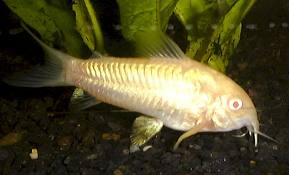
This catfish does not look like this in the natural state. Albinos do not survive long in nature. I’ll give it 3 points.
I can’t think of a white Saltwater fish. Zero points for the Salties!
The score now. Freshwater 8. Saltwater 2.
How about a yellow fish?
Here’s the freshwater Gold Barb.

Not bad. I would say 2 points for them.
Here’s the saltwater yellow fish, the Yellow Tang.
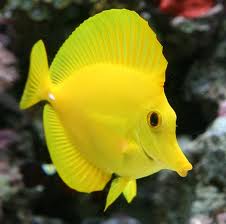
Wow, that’s a FIVE for sure. That makes the score 10 to 7 for the Freshies.
Oh, wait a second, there is a last-second entry for the freshwater team!
The Electric Yellow Labidochromis. An African Cichlid.
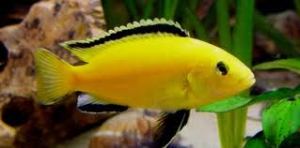
That’s worth four points at least. The score is getting wider.
It’s Freshwater 12. Saltwater 7.
On to Blue.
Freshwater has Blue Platies and Blue Gouramis but the bluest is the Electric Blue African Cichlid.

I’ll give it two points because the female is not very Blue. (sorry, ladies)
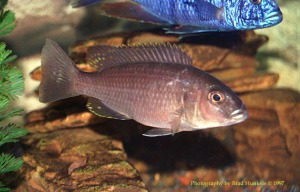
Here’s a saltwater Blue Damsel.
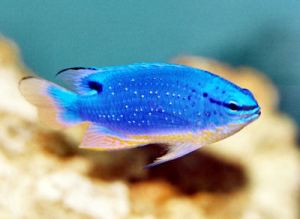
That’s an easy 5 points for the Salt team.
The score is now Fresh 14, Salt 12.
Green fish are the next category. I thought there would be more green fish. They could hide among plants. From an evolutionary standpoint I think green would be a good color to be.
Here’s a freshwater green fish.
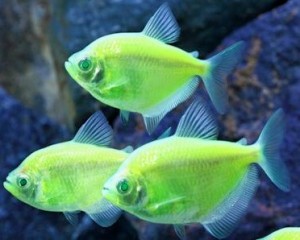
That looks like 4 points.
And, in the ocean, here is the Green Chromis.
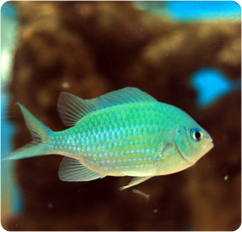
I’ll give the Chromis 2 points.
The score is now Freshwater 18. Salt 14.
Hang on! Time-out! A penalty has been assessed against the freshwater team. The Green Tetra is a genetically modified fish. Cheater!!!!4 points are taken from the Freshies.
The score is now tied 14-14.
Let’s look at Orange fish.
The Sunset Platy.
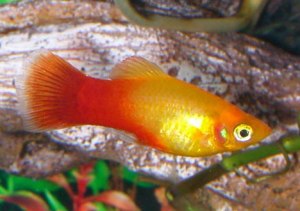
I like these Platies and give them 3 points for orangeness.
Here’s a saltwater Flame Angelfish.
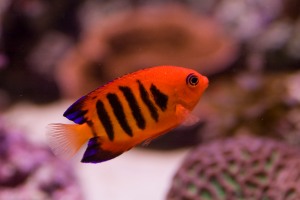
Almost all orange except the stripes. That’s a beautiful fish worth 4 points to the Saltwater team.
The Salties pull ahead 18-17!!!
Black fish are next.
Here’s the Black Molly in a tank with a black background.

Here’s another Black Molly.
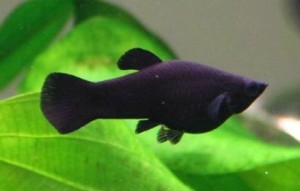
That’s the blackest fish in the world. 5 points for the freshwaters.
The saltwater entry is the Domino Damsel.
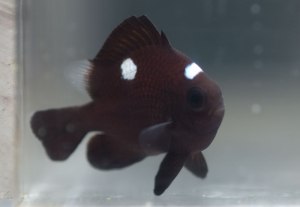
That’s four points for the salt. The score is tied 22-22.. oh wait here’s an adult Domino Damsel.
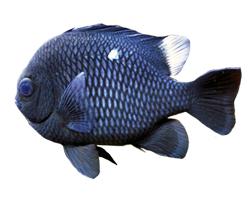
The damsel only gets 2 points.
Freshies are back on top 22-20.
The last category is multi-colored fish.
Here is a group of Discus.
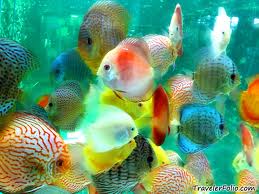
Since these are all modified by captive breeding I’ll give them 3 points.
Freshwater 25-20.
The final entry for saltwater is the Mandarin fish.
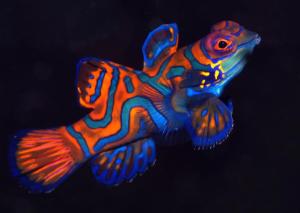
Fantastic, that’s five points!!! I wish I could give it a ten.
The score is TIED 25-25!!!
How can I break this tie??
How about the ugliest fish??
Freshwater?

4 points?
Saltwater.
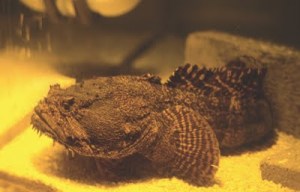
That is just as ugly. 4 points for the Salt team.
Still 29-29.
OK, one last chance to solve this issue.
I decided to do a Google Image search.
Freshwater fish.
…and the Google Image search for Saltwater fish.
And the winner is …… Saltwater … by one point.
I’ll admit the saltwater fish are more colorful, but just barely. If you have a freshwater tank don’t be jealous.
97.5% of the Earth’s water is saltwater. 0.3% of the water is in freshwater lakes and rivers. The rest is groundwater, snow, and glaciers.
Photos for this post are from the Internet and are not mine at all. I usually use my own in this blog. I appreciate the use of these photos and hope that I have not offended anyone by using their pictures.

